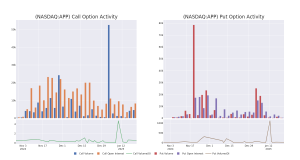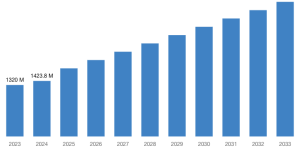A little over three weeks ago, investors received what can arguably be described as the most-important data release of the fourth quarter — and it has nothing to do with any economic report or specific earnings release.
Thursday, Nov. 14, marked the deadline for institutional investors with at least $100 million in assets under management (AUM) to file Form 13F. This is a required filing with the Securities and Exchange Commission no later than 45 days following the end to a quarter that details which stocks Wall Street’s greatest money managers purchased and sold.
Are You Missing The Morning Scoop? Breakfast News delivers it all in a quick, Foolish, and free daily newsletter. Sign Up For Free »
Although 13Fs have their limitations — since they’re filed 45 days following the end to a quarter, they may provide a stale portfolio snapshot for active hedge funds — they can provide valuable information about the stocks, industries, and trends that have the attention of Wall Street’s most-successful investors.
While 13F filing season has historically been about seeing which stocks Berkshire Hathaway‘s Warren Buffett has been buying and selling, he’s far from the only billionaire investor known for their phenomenal returns on Wall Street.
For instance, professional and everyday investors tend to pay close attention to billionaire Philippe Laffont at Coatue Management, who’s known for focusing on higher-growth tech and healthcare companies. Laffont’s fund closed out the September-ended quarter with close to $27 billion in AUM that was spread across 81 stocks.
But what’s particularly noteworthy about Laffont’s trading activity over the trailing year (ended Sept. 30) has been his approach to two of Wall Street’s industry-leading growth stocks.
Though Coatue Management completely exited seven positions during the third quarter and reduced its holdings in 17 others, the most eye-popping of all moves has been Laffont’s persistent selling in Wall Street’s most-prized artificial intelligence (AI) stock, Nvidia (NASDAQ: NVDA).
Accounting for Nvidia’s historic 10-for-1 stock split, which occurred in June 2024, Coatue held 45,410,400 shares of Wall Street’s AI darling, as of Sept. 30, 2023. Just 12 months later, this position has been slashed by 78% to just 10,138,161 shares.
Benign profit-taking is certainly a viable explanation for Laffont’s continued selling of Nvidia stock. In less than two years, Nvidia has added more than $3 trillion in market value, with its near-monopoly share of graphics processing units (GPUs) in data centers leading the charge. We’ve never witnessed a market-leading businesses increase in value as quickly as Nvidia.



